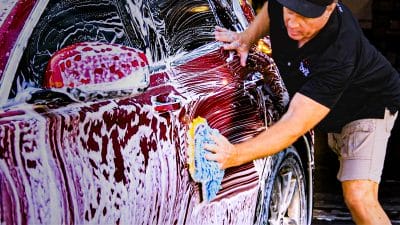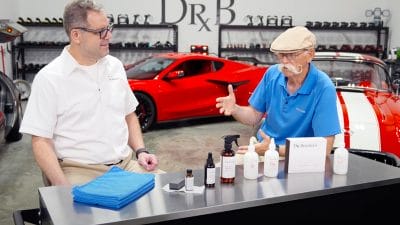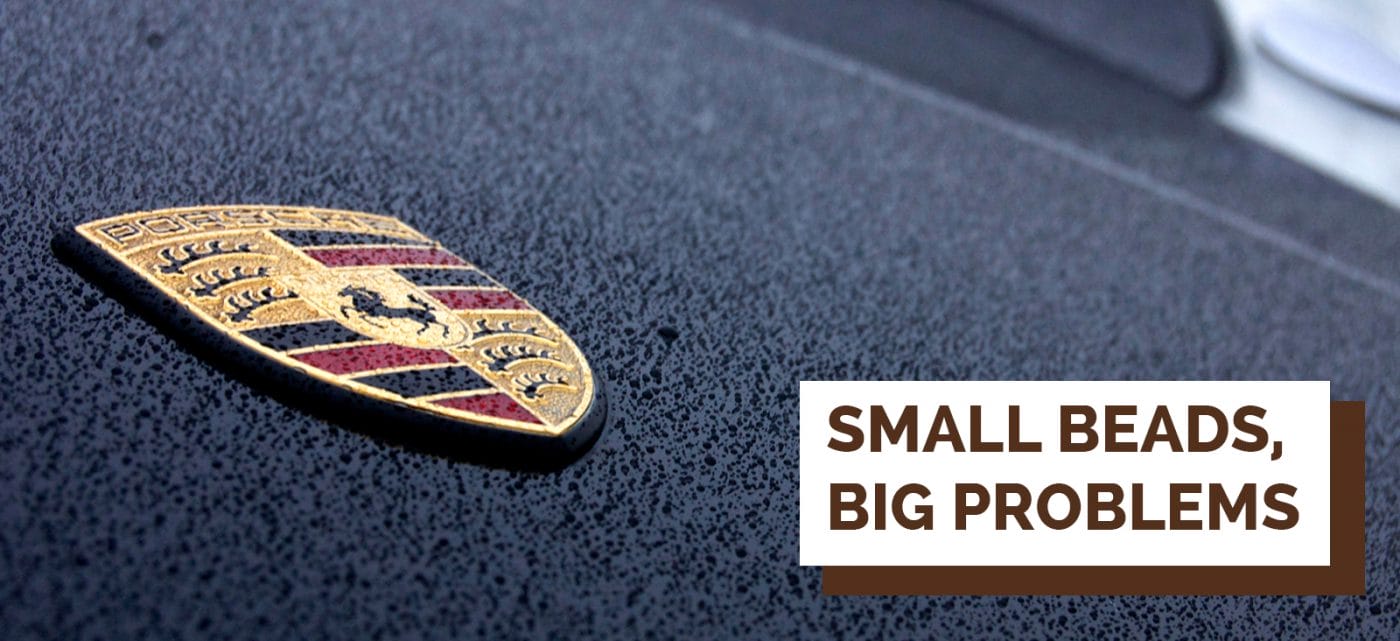Last Updated April 29, 2022
Sure, water beading up on your car might look cool, but unless those beads are sliding off your finish, they can cause a bit of damage down the road, especially if left to sit, with water spots on ceramic coating being a prime example. Now, with bigger beads, this isn’t so much of a problem—they tend to roll off more easily. Smaller beads, on the other hand, tend to stick. Why is this, and what’s the solution? Well, it has to do with the various variables that determine a water bead’s sliding angle.
What makes beads slide
There are a lot of different variables that go into what determines a bead’s sliding angle. They vary from size (weight and width), contact angle hysteresis, free energy of water at the liquid-gas interface, etc. Sounds like a lot, right? That being the case, we’re going to focus on just one variable: size.
Why size matters
With your average hydrophobic ceramic coating, as the weight and width of a water bead goes up, sliding angle goes down. Which makes complete sense; just think about it—if you were to start with a small bead on a slightly inclined surface, then progressively add more and more droplets to the bead, eventually that bead would begin to slide down the incline. Consider a real world example:
Let’s say you leave your coated car out at night and it rains. If it was a heavy downpour, chances are you won’t be left with a whole lot of beads on your finish. That’s because the large volumes of water created beads big enough to slide on their own. But if it was a light rain or drizzle, you’ll see beads littered across your finish. They just don’t have the mass to slide!
So if mass isn’t on their side, how can you make small beads slide just as well as the big ones? Well, you need something that goes beyond conventional coating technology. Something that re-engineers the surface in such a way that even a tiny bead can roll off at a low incline.
Coatings with low sliding angle (even for tiny beads)
Dr. Beasley’s employs a unique nanotechnology that totally transforms surfaces, re-engineering them so sliding angle is minimized across the board, even for low-mass beads. This technology is part of their entire coating line; take Dr. Beasley’s Nano-Resin, for example. Even with a light drizzle, a Nano-Resin coating will shed water beads with ease—no more water spots from errant sprinklers or overnight showers.
So what is it about Dr. Beasley’s nanotechnology that makes their coatings slide off small beads? We’ll get into that in a future article, so make sure you sign-up for our e-mail list below to stay in the loop!






Questions? Comments?
Email Us